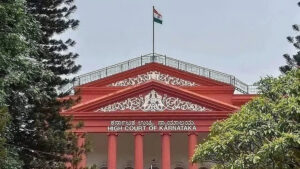In a shocking revelation that has sent tremors through India’s higher education landscape, the Central Bureau of Investigation (CBI) recently arrested key panel members of the National Assessment and Accreditation Council (NAAC) for allegedly accepting bribes in exchange for awarding inflated accreditation scores to colleges and universities. This high-profile case has sparked outrage and deep concern across academic circles, as it compromises the very credibility of India’s institutional rating system.
The scandal strikes at the heart of India’s higher education evaluation process — NAAC, the body responsible for assigning quality ratings to institutions based on rigorous academic and infrastructural criteria. With several universities reportedly benefiting from manipulated ratings, the case raises serious questions about the ethics, transparency, and legitimacy of accreditation in India.
What Is NAAC and Why Accreditation Matters
The National Assessment and Accreditation Council (NAAC) is an autonomous body under the University Grants Commission (UGC) mandated with evaluating and accrediting higher education institutions across India. A NAAC rating — expressed in grades like A++, A+, B, etc. — signifies the quality of teaching, infrastructure, research, student outcomes, and overall institutional performance.
These ratings carry enormous weight. They influence:
-
Student enrollment
-
Access to government funding
-
Faculty recruitment
-
International partnerships
-
Overall reputation of the institution
An inflated rating can artificially boost a college’s public image and financial prospects, even if it fails to meet basic academic standards. That’s precisely why this bribery case has sent shockwaves throughout the academic ecosystem.
The Bribery Nexus: How the Scam Unfolded
According to investigative reports, CBI officials unearthed a well-organized corruption racket involving NAAC peer team members, middlemen, and college officials. These peer teams — usually consisting of academicians and experts — are sent by NAAC to visit and assess institutions on a range of parameters before assigning a final grade.
The arrests were made after surveillance operations and evidence gathering indicated that these panel members had accepted monetary bribes to manipulate their evaluation reports. In return for these illegal payments, colleges that might otherwise have received mediocre or poor grades were awarded high scores such as A or A+, enabling them to attract students and funding under false pretenses.
Several raids were conducted across the country — including at educational institutions and residences of accused members — resulting in the seizure of documents, digital devices, and cash, which served as key evidence in building the case.
Universities Under the Scanner
While investigations are still ongoing, it has been reported that multiple institutions across different states were involved. Some of these universities had unusually rapid improvements in their NAAC grades without proportionate academic or infrastructural development.
These colleges allegedly paid bribes through middlemen or agents who facilitated contact with the visiting NAAC evaluators. In some cases, peer team members allegedly submitted pre-written evaluation reports without physically inspecting campuses or verifying academic records.
The compromised ratings not only deceived students and regulatory bodies but also robbed deserving institutions of fair competition and recognition.
Institutional Integrity at Stake
The implications of this case go far beyond a few corrupt officials. It threatens the entire framework of quality assurance in Indian higher education. When institutions can “buy” their rankings, the entire purpose of accreditation becomes meaningless. It endangers the future of students who depend on such evaluations to make informed decisions about their education.
Furthermore, it damages India’s image globally, as NAAC ratings are used by international universities and credential evaluators to assess the quality of Indian degrees and institutional partnerships.
CBI’s Investigation: An Expanding Probe
The arrests made so far appear to be just the beginning. The CBI has indicated that further arrests and questioning are likely, as they probe the network of agents, coordinators, and complicit administrators.
Investigators are analyzing data collected from seized laptops, mobile phones, email trails, and financial transactions to identify other educational institutions that may have obtained ratings through bribes. The bank accounts of the accused are also being scrutinized to uncover potential money trails and shell companies.
There are growing calls for a nationwide audit of recent NAAC accreditations, particularly those that saw sudden and inexplicable grade inflation.
Fallout and Reactions from Academia
The academic community has responded with a mix of shock, anger, and disappointment. Many educators have demanded a complete overhaul of the peer review process, stricter oversight on evaluation visits, and a more transparent grading methodology.
Some NAAC-accredited institutions that obtained their ratings fairly have voiced concern that this scandal could taint all accreditation scores, creating distrust among students, recruiters, and foreign universities.
Education reformists argue that the scandal is not just a case of individual corruption — it reflects a systemic vulnerability, where performance metrics have been reduced to checklists, and where accountability is weak.
Government and UGC Response
The Ministry of Education and the UGC have taken note of the scandal and are expected to issue new guidelines to ensure the integrity of the accreditation process. Some likely steps include:
-
Revamping the peer team selection process to avoid conflicts of interest.
-
Installing surveillance cameras and digital tracking during campus evaluations.
-
Publicly publishing visit reports and peer team observations in full.
-
Making student and faculty feedback a larger component of institutional assessments.
-
Strict penalties for institutions found guilty of offering or accepting bribes.
Additionally, there are discussions around integrating AI-based auditing tools to detect inconsistencies in submitted data and flag suspicious evaluations for manual review.
Students and Parents: How to Stay Vigilant
For students and families navigating the complex world of college admissions, this scandal is a harsh reminder not to rely solely on ratings. Here’s what aspirants should do:
-
Visit campuses personally before admission to assess infrastructure and faculty quality.
-
Speak to current students for real insights.
-
Check multiple rankings, not just NAAC, and look at past performance trends.
-
Use platforms that provide reviews, placement statistics, and research outputs.
-
Verify faculty qualifications, lab facilities, and internship opportunities.
Conclusion: A Breach of Trust in India’s Academic Backbone
The NAAC bribery case is a disgraceful breach of public trust that exposes serious flaws in how India evaluates and certifies its institutions of higher learning. At stake is not just a system of grading — but the futures of millions of students, the credibility of educators, and the integrity of the country’s education framework.
As arrests continue and investigations unfold, the academic world must confront uncomfortable questions: How many institutions owe their reputations to manipulation? How many students were misled by ratings that were bought, not earned? And most importantly, how do we fix a system that has allowed this rot to spread?
This case must serve not just as a scandal — but as a turning point. A call for reform. A demand for integrity. And a collective promise to restore the soul of Indian education — where merit, quality, and honesty stand above all else.
Our Services – FACTS Transcripts
We at FACTS Transcripts assist in various services, including:
- Mark Sheet Transcripts
- E-Transcripts
- Duplicate Mark Sheets & Degree Certificates
- Medium of Instructions Certificates
- Attestations
- HRD Attestation / Apostille Services
- ECA (Educational Credentials Assessment)
Trusted by leading global verification organizations, including WES, IQAS, PEBC, NDEB, NASBA, CAPR, NZQA, ICAS, NCESS, ICES, ECE, eduPASS, ACEI, GCEUS, Comparative Education Services, NNAS, NCA, SAQA, QMAS, FORAC, Australian Pharmacy Council, and more.
FACTS Transcripts – The preferred choice for university document verification worldwide. We ensure a hassle-free process for obtaining your transcripts.









